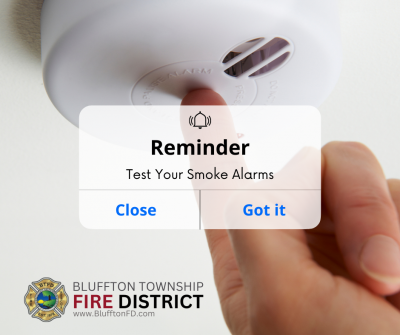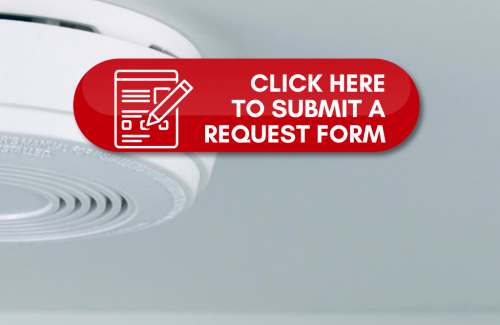Smoke Alarms
Smoke alarms sense smoke well before you can, alerting you to danger. Smoke alarms need to be in every bedroom, outside of the sleeping areas (like a hallway), and on each level of your home. Smoke alarms should not be installed in your kitchen or bathrooms.
For the best protection, use combination smoke and carbon monoxide alarms that are interconnected throughout the home. These can be installed by a qualified electrician, so that when one sounds, they all sound. Interconnected alarms ensure you can hear the alarm no matter where in your home the smoke originates.
Today’s homes burn faster than ever. You may have as little as two minutes (or even less time) to safely escape a home fire from the time the smoke alarm sounds. Your ability to get out of a home during a fire depends on early warning from smoke alarms and advance planning.
The Fire District provides FREE smoke alarm assistance to residents living in our service area. Service calls are provided on the 1st and 3rd Wednesday of each month on a first-come basis. Appointments are available on these days from 8:00 a.m. to 12:00 p.m. in 30 minute windows. Once you complete the request form, a member of our Community Risk Reduction team will contact you to schedule your appointment.
WHERE SHOULD I INSTALL SMOKE ALARMS?
- In each bedroom
- In the hallway
- Within six feet of each door leading to a bedroom or sleeping area
- On each level of your home
- Installing a smoke alarm in an attic or other unheated spaces where environmental changes could affect the alarm's operation is NOT recommended.
- Smoke alarms are not recommended for installation in kitchens, bathrooms, garages or workshops where cooking fumes, steam, or vehicle exhaust could cause false alarms.
SMOKE ALARM TROUBLESHOOTING & MAINTENANCE SUGGESTIONS
- If your smoke alarm is chirping about every 60 seconds, it's time to replace the battery. Change the battery immediately to ensure you have proper fire protection.
- If changing the battery doesn't stop the "chirping," it's likely time to replace your smoke alarms. Smoke alarms should be replace every 10 years.
- Never disable an alarm by "borrowing" its battery for another use. An alarm without a battery provides no protection for your family.
- Test your smoke alarms monthly. Typically, this involves depressing the test button on the face of your smoke alarm.
- Change your batteries at least once a year.
- Clean the outside of your smoke alarms using a can of compressed air or a vacuum cleaner with a hose attachment. Never use cleaning products to clean smoke alarms.
- Always follow the manufacturer's instructions found either in the manual that came with your smoke alarm or on the company's website.
- Battery-only smoke alarms provide just the minimum level of protection. When possible, use wired, interconnected smoke alarms for maximum protection.
- When installing new smoke alarms, be sure to replace your old units with comparable types. If you have a wired, interconnected smoke alarm replace it with another wired device.
- Always make sure your replacement smoke alarms have been tested by a reputable safety laboratory such as Underwriters Laboratories (UL Listed) or Intertek. You can find the testing laboratory logo either on the smoke alarm or the packaging. Below are examples of their respective logos.


For more information about installing and maintaining smoke alarms visit the National Fire Protection Association website.




